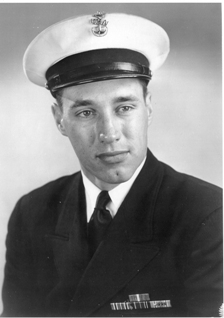FELLER-ROBERT
ROBERT WILLIAM ANDREW "BOB" FELLER

CGM

MAJOR LEAGUE BASEBALL HALL OF FAME
DECEASED, DECEMBER 15, 2010
Robert William Andrew "Bob" Feller (born November 3, 1918 in Van Meter, Iowa), nicknamed the "Heater from Van Meter" and "Rapid Robert", is an American former Major League Baseball pitcher. He was inducted into the Baseball Hall of Fame in 1962.
Feller played for the Cleveland Indians, his only team, for 18 years. He ended his career with 266 victories and 2,581 strikeouts, and led the American League in strikeouts seven times and bases on balls eight times. He pitched three no-hit games and shares the major league record with 12 one-hitters. Feller was the first pitcher to win 20 or more games before the age of 21. He was elected to the Baseball Hall of Fame in 1962, his first year of eligibility. When he was 17 years of age, he struck out 17 batters.
On December 8, 1941 Feller, enlisted in the Navy, volunteering immediately for combat service becoming the first Major League Baseball player to do so following the Attack on Pearl Harbor on December 7. Feller served as Gun Captain aboard the USS Alabama, and missed four seasons during his service in World War II, being decorated with five campaign ribbons and eight battle stars.
In 1943, Feller married Virginia Winther (1916-1981), daughter of a Wisconsin industrialist. They had three sons, Steve (b. 1945), Martin (b. 1947), and Bruce (b.1950). He lives with his wife, Anne Feller, in Gates Mills, Ohio, a suburb of Cleveland.
Even though his military career consumed four prime baseball years, Feller ranks 28th in history with 266 wins. He remains the Indians all-time leader in shutouts (46), strikeouts (2,581), innings (3,828) and All-Star appearances (8).
[Compiled from Wikipedia and Bob Feller's Official Site.]

SOURCE: “The World War II Memorial,” Author: Douglas Brinkley; Published: 2004:
I’m from a little town, Van Meter, in Iowa. I joined the Navy, went to Norfolk, went through boot camp, then went on to War College in Newport, Rhode Island. I was assigned to the battleship ALABAMA when it was commissioned in Hampton Roads. The ALABAMA was a beautiful ship. Our job was to protect the carriers. I was a Chief Petty Officer, and I was the gun captain on the 40 millimeter quad. These were hydroelectric guns. We called them “pom poms.” We typically fired when the distance to the target was about 4,000 yards. When you’re on the guns and enemy aircraft are coming at you, all you can do is short bombardment. It’s very, very noisy, and you can’t hear a thing. The only thing you cared about was that the plane splashed into the water before it got to your ship. We had great antiaircraft gunners on the ALABAMA. My boys on the guns would keep pouring the ammunition in and we’d keep pumping it out. We believed in what we were doing, we worked at it, and we were well prepared. We practiced at night, blindfolded. You practiced with your eyes closed. Everything became automatic. If something didn’t go wrong, nobody got killed.
The ALABAMA was the only ship in the Third Fleet that took to the Pacific that didn’t lose a man to enemy action. Our first time out, we headed to Kwajalein, and on to Eniwetok, and then the Carolinas. We went down and hit New Guinea, came back and took the Marianas, onto the Philippines, and then Japan. One year we crossed the Equator 28 times in one year, down around the Carolinas, winning back all those islands in the Pacific. The Third Fleet was the most powerful naval armada in the history of the world. If you don’t believe me, just ask our opponents. They’ll let you know what they thought. In the Battle of the Philippine Sea we shot down over 470 Japanese aircraft. Their idea was to fly off their carriers and destroy the American Pacific fleet. They brought their fleet up from the San Bernardino Strait and the plan was to fly over us and hit us with their bombs, dive bombers, kamikazes—whatever—and then go and refuel and rearm over on Tinian or Saipan,. Well, our fighters sank several of the Japanese carriers so that the Japanese planes had no place to land when they got back. And the ones that did get back, why, they’d wipe them out on their runways. So that was the end of Japanese naval power.
I played catch aboard ship a lot, at sea and in port. We had our own baseball team. I got uniforms for ‘em. We’d play the battleship INDIANA or the MISSOURI or the IOWA. We had times over there on the beaches when the officers would come and we had some pretty good crowds. It provided some entertainment in the Navy. Being inducted into the Baseball Hall of Fame is a great honor. Being invited to the White House is a great honor. But to be able to serve the country under the great leadership we had in Franklin Roosevelt and Harry Truman, and with the people we had behind us, back on the farms and in the cities and in the factories, producing what we needed to win the war—that’s the greatest honor. I’m no hero. The heroes never return. We survivors, we returned. The heroes are still there in the Pacific and the beaches all over Europe.
/s/ Bob Feller

